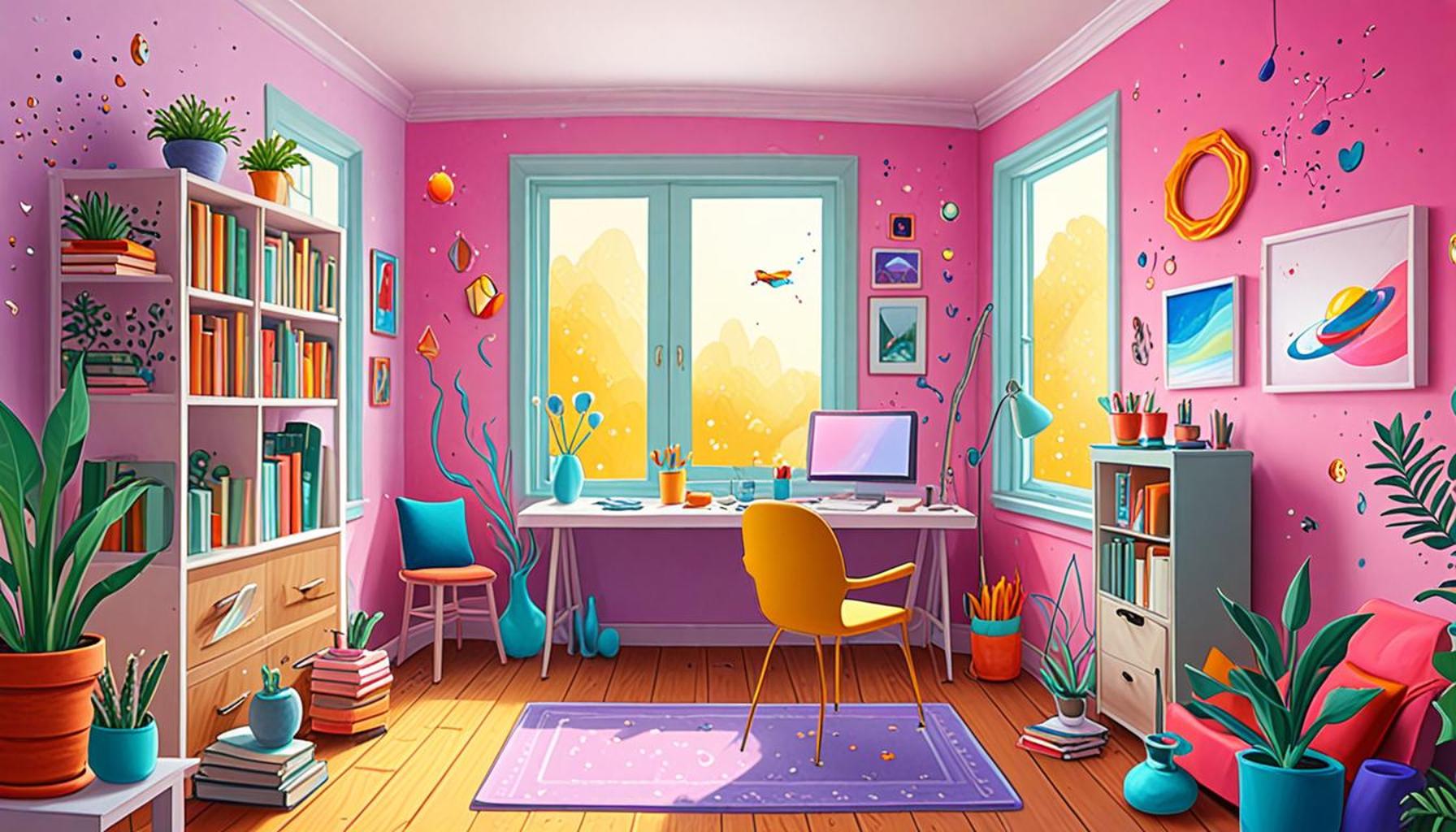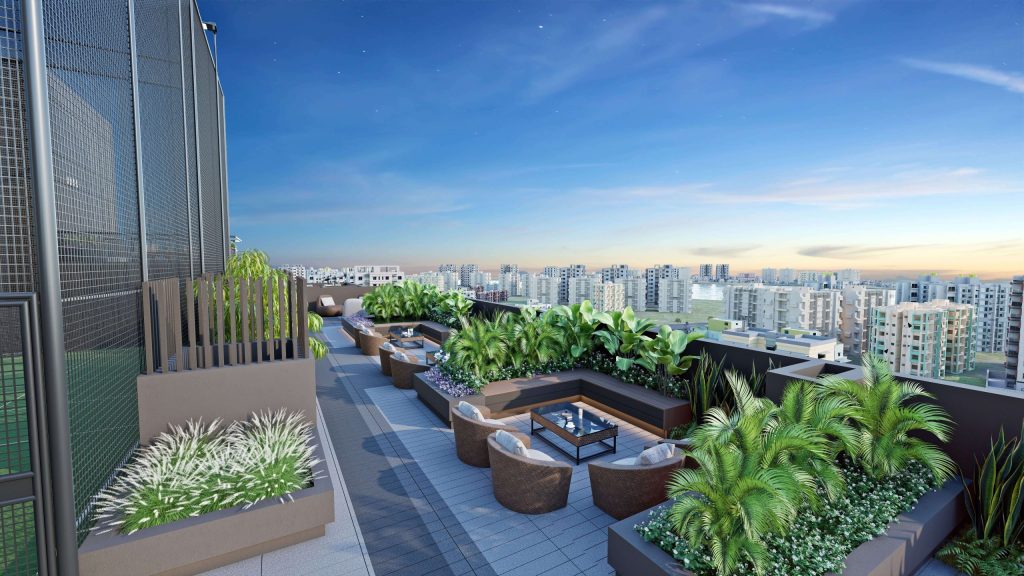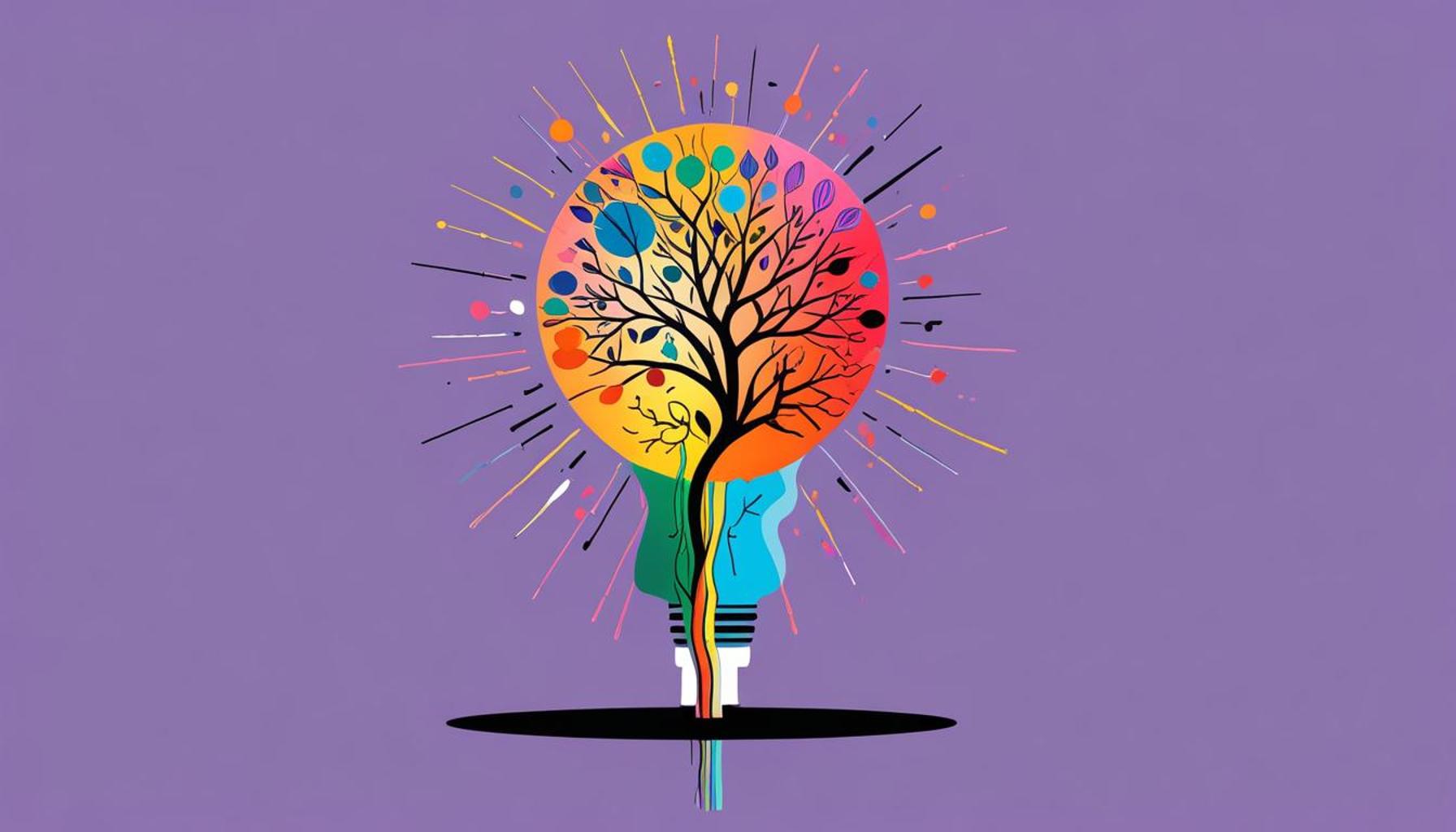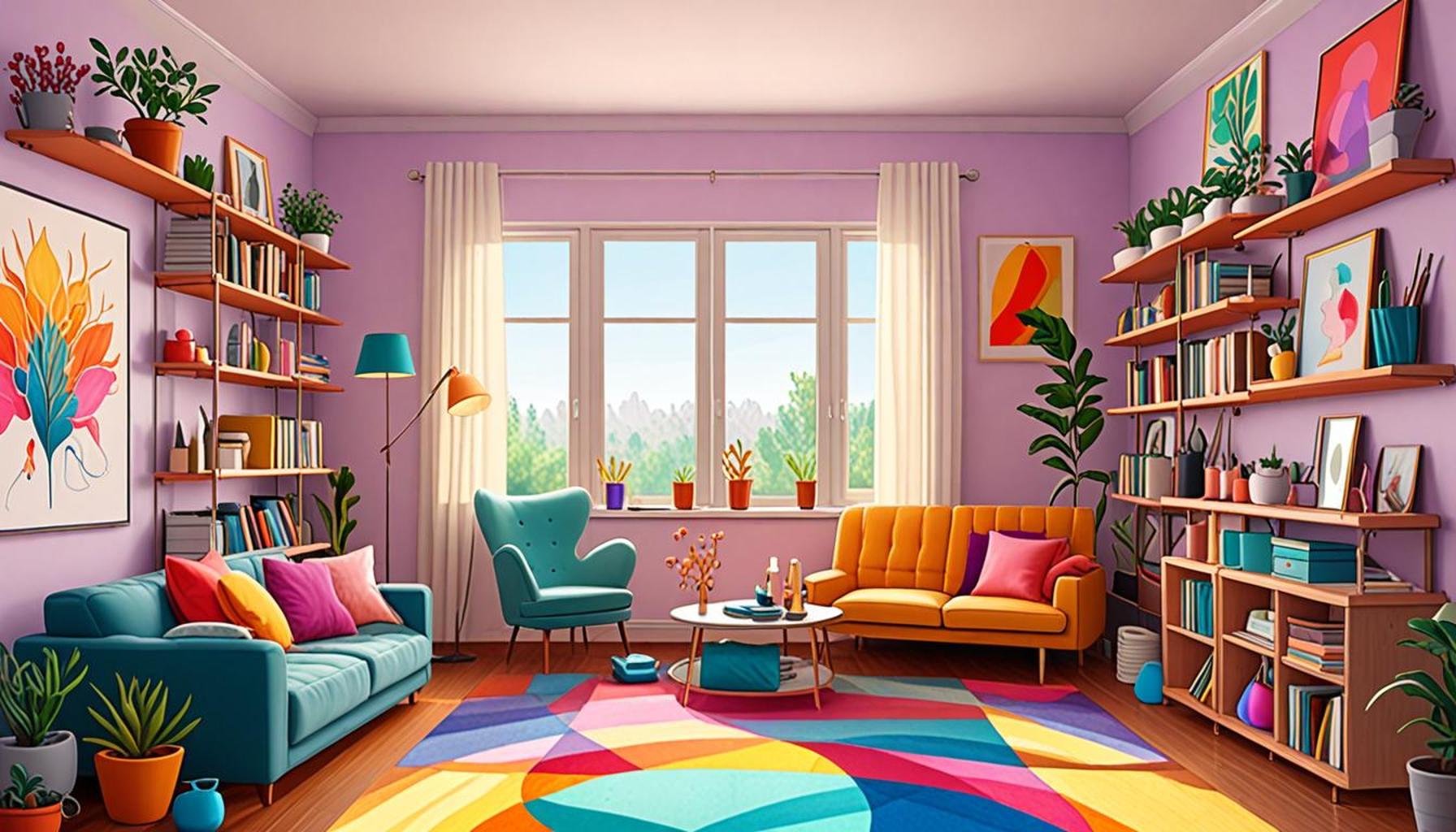Calm Spaces: Creating Intentional Environments to Stimulate Creativity and Well-Being

The Importance of Intentional Environments
In contemporary society, where the pace of life often feels frenetic, creating intentional environments has become not just a luxury but a necessity for fostering creativity and enhancing well-being. Calm spaces function as sanctuaries, allowing individuals to disengage from the incessant distractions of daily life. By offering a refuge for reflection and concentration, these thoughtfully designed environments can significantly boost productivity while cultivating mental clarity and emotional resilience.
To fully comprehend the impact of calm spaces, let’s examine key elements that contribute to their effectiveness:
- Natural Light: A well-lit space filled with natural sunlight can elevate mood and increase energy levels. Studies have shown that exposure to natural light has a positive effect on the production of serotonin, a neurotransmitter associated with feelings of happiness and well-being. Consider, for instance, workplaces that have large windows or skylights to bathe the environment in sunlight, which in turn can enhance employee satisfaction and productivity.
- Nature Integration: The presence of plants and natural elements in a space has been shown to lower stress levels and improve focus. Research from the University of Queensland indicates that people working in environments enriched with greenery reported 37% higher productivity. Adding indoor plants, such as succulents or ferns, can create a sense of connectedness to nature, promoting tranquility in high-pressure settings.
- Minimalist Design: The aesthetic principle of minimalism, characterized by simplicity and elegance, can greatly contribute to mental well-being. A clutter-free space minimizes distractions, facilitating a clearer thought process and reducing anxiety levels. For example, companies like Apple have embraced minimalist design in their corporate environments, leading to enhanced creativity and employee focus.
Research indicates that purposeful arrangements in our surroundings can evoke powerful feelings of tranquility. For instance, a study conducted by the University of Michigan highlighted that even brief exposure to natural environments could significantly enhance attention spans and working memory. Additionally, the specific colors and textures in a room—such as cool blues or soft greys—can create a calming visual atmosphere conducive to creative exploration.
As we dive further into the journey of crafting these intentional environments, we will explore practical strategies for implementation, diverse illustrative examples from both workspaces and home environments, and the far-reaching benefits of cultivating calm spaces. Emphasizing simple yet effective changes can pave the way for transformative experiences that enhance creativity and overall mental well-being. By creating spaces that are intentionally calming, we not only improve our productivity but also nurture a healthier state of mind—an invaluable asset in today’s busy world.
DIVE DEEPER: Click here to learn more about reducing waste

Elements of Calm Spaces
Creating calm spaces is an art that transcends mere aesthetics; it involves the thoughtful integration of elements that resonate with one’s psychological and emotional needs. By understanding and incorporating specific components, individuals can transform any environment into a haven for creativity and well-being. Here, we delve deeper into essential factors that define these intentional spaces:
- Soundscapes: The auditory environment plays a crucial role in how we engage with our surroundings. Gentle sounds, like soft instrumental music or nature sounds, have been shown to reduce anxiety and foster a meditative state. Research indicates that workplaces incorporating calming background music experience a significant decrease in stress levels among employees. Implementing sound-absorbing materials, such as carpets or acoustic panels, can further help to create a serene auditory landscape, aiding concentration and reducing mental clutter.
- Color Psychology: The colors in a space can profoundly impact mood and creativity. Studies reveal the psychological effects of different colors, highlighting that cooler tones like blue and green can inspire tranquility and focus, while warm tones such as yellow can promote optimism and energy. A workspace decorated in soothing hues can effectively calm the mind, enable clear thinking, and even spark creative ideas. Consider utilizing a color scheme that aligns with your desired emotional outcomes for the space.
- Personal Touches: Individualizing a calm space through personal artifacts can enhance emotional connection and comfort. Whether it’s inspirational quotes, cherished photographs, or unique artwork, these elements serve as reminders of one’s values and aspirations. Beyond nostalgia, personal touches can invite positive emotions and an atmosphere of motivation, making the environment more inviting and conducive to creative thought.
The incorporation of these elements can heighten the effectiveness of a calm space. For instance, a study published in the journal Environment and Behavior found that environments tailored to the needs and preferences of individuals result in increased satisfaction and motivation. When applied thoughtfully, the symbiosis of sound, color, and personal expression creates a space where creativity can thrive.
Furthermore, intentional design extends beyond individual components. The overall layout and organization of a space are equally pivotal. Open layouts with designated zones for different activities can cater to varying needs—whether it’s collaboration, brainstorming, or solitary focus. Individuals can feel empowered and inspired within spaces that support diverse modes of working and thinking. For example, tech companies such as Google and Facebook utilize flexible work environments that allow their employees to choose quieter spaces for deep focus or vibrant areas for collaborative brainstorming, leading to notable increases in both creativity and employee well-being.
As we continue to explore effective strategies for crafting calming environments, it’s clear that a comprehensive approach—considering sound, color, and personal elements—can yield remarkable benefits. Establishing a calm space is a journey that involves understanding individual needs, making informed choices, and nurturing an atmosphere that invigorates the mind and spirit. By embracing these principles, we lay the groundwork for enhanced creativity and improved overall well-being in our daily lives.
| Advantage | Description |
|---|---|
| Enhanced Focus | Creating calm spaces can reduce distractions and increase concentration, paving the way for creativity. |
| Stress Reduction | Intentional environments designed for peace can significantly lower stress levels, thus promoting overall well-being. |
The concept of calm spaces delves deep into the psychology of our environments, exploring how physical surroundings can invoke feelings of tranquility and openness. By designing spaces that are aesthetically pleasing and functionally thoughtful, we cultivate a fertile ground for ideas to flourish. For instance, incorporating elements of nature, such as plants or natural light, can significantly shift the ambiance of a space. Studies have shown that exposure to greenery not only boosts creativity but also contributes to a sense of peace and fulfillment. Moreover, color psychology plays a crucial role in tailoring serene environments; soft hues may promote relaxation, while vibrant colors can invoke energy. Each carefully selected element—from furniture to wall art—impacts our mental state and can either stimulate or suppress our creative juices.As we continue to explore the intersection of intentional design and creativity, it becomes clear that these spaces are not just about aesthetics but about nurturing our mental health and inspiring innovation. The journey into calm spaces is as much about self-discovery as it is about creating a harmonious environment that supports creativity and well-being.
DON’T MISS: Click here to learn more
Designing for Flow: Spatial Layout and Functionality
While individual elements such as sound, color, and personal artifacts are crucial, the layout and functionality of a calm space hold equal significance in nurturing creativity and well-being. A well-thought-out spatial design can guide movement, enhance focus, and promote collaboration, enabling individuals to navigate their environments intuitively. Here’s how spatial layout contributes to the creation of intentional environments:
- Defined Zones: Establishing distinct zones within a space can enhance productivity by catering to specific activities. Creating areas for quiet reflection, brainstorming, or collaborative work can foster the right mindset for each task. This zoning approach reduces distractions and helps individuals quickly transition between different modes of work. In co-working spaces like WeWork, this philosophy is evident, as they offer various settings that cater to entrepreneurs’ varying needs, from focused desks to vibrant meeting rooms.
- Natural Light Optimization: Access to natural light is essential for a calm environment. Research shows that exposure to natural light can improve mood, increase energy levels, and even enhance cognitive functions. Therefore, positioning workspaces near windows or utilizing skylights can leverage these benefits. Studies by the American Society of Interior Designers indicate that offices with ample natural light result in employees who are more engaged and productive. Incorporating light-filtering furnishings or glass partitions can further optimize the flow of light while maintaining privacy.
- Biophilic Design: Integrating elements of nature is gaining traction in contemporary design, known as biophilic design. Bringing in plants, water features, or even a simple view of natural landscapes can have profound effects on well-being. A study published in the journal Environmental Science & Technology indicated that incorporating plants in an indoor environment can lead to a 15% increase in productivity. By enhancing air quality and introducing soothing aesthetics, these elements not only calm the mind but also nourish creativity.
Incorporating these spatial design strategies can create an environment that naturally encourages a state of flow, allowing creativity to flourish. For instance, the open concept offices popularized by tech firms can be optimized with noise reduction strategies, ensuring that the buzz of collaboration does not become overwhelming. By creating balance between openness and privacy, individuals can engage in meaningful interactions while also having spaces to retreat into for deep focus.
Furniture and Ergonomics: Comfort Meets Inspiration
Another aspect of designing calm spaces involves selecting the right furniture and ensuring ergonomic principles are applied. Comfort and usability significantly influence how individuals interact with their environment. Poor seating or workspace designs can lead to physical discomfort, ultimately hindering creativity. Here’s a closer look at how to achieve comfort:
- Ergonomic Solutions: Investing in ergonomic furniture that promotes healthy posture can reduce distractions related to discomfort. Height-adjustable desks, supportive chairs, and proper monitor placements can all contribute to a more conducive working environment. For example, according to the Occupational Safety and Health Administration (OSHA), ergonomic adjustments lead to reduced fatigue and higher productivity levels.
- Multi-functionality: Choosing adaptable furniture adds flexibility to any space. Movable tables, collapsible chairs, and modular designs allow individuals to reconfigure their environments according to their needs. This fluidity in design fosters creativity by accommodating spontaneous brainstorming sessions or quiet reflection periods without the hassle of a complete rearrangement.
The thoughtful integration of these elements—including zoning, natural light, biophilic design, and ergonomic furniture—can create a calm atmosphere that stimulates creativity and enhances well-being. By focusing on the holistic interaction between space and its occupants, we can cultivate environments that not only feel good but also inspire innovation and clarity of thought.
LEARN MORE: Click here for insights on mindful consumption
Conclusion: Embracing Calm Spaces for Enhanced Creativity and Well-Being
In today’s fast-paced world, the significance of calm spaces cannot be overstated. These intentional environments play a critical role in fostering creativity and enhancing overall well-being. As explored in this article, creating such spaces requires a harmonious blend of spatial layout, functionality, and thoughtful furniture choices. By understanding the importance of defined zones, optimal natural light, and the principles of biophilic design, individuals and organizations can promote a natural flow that stimulates both focus and innovation.
Furthermore, prioritizing ergonomics ensures that physical comfort is not overlooked, ultimately minimizing distractions and maximizing productivity. By choosing adaptable, multifunctional furniture, spaces can transform to accommodate various activities—be it collaboration, reflection, or deep work. This adaptability not only encourages spontaneous creativity but also respects the diverse needs of occupants.
As we move forward, embracing and implementing the concepts of calm spaces is essential—for ourselves and our communities. Whether at home, in the workplace, or in shared environments, the benefits of these intentional designs ripple through our daily experiences, leading to healthier minds and heightened creativity. By investing time and resources into crafting calm spaces, we take a critical step towards nurturing not only our well-being but also the innovations of tomorrow.


